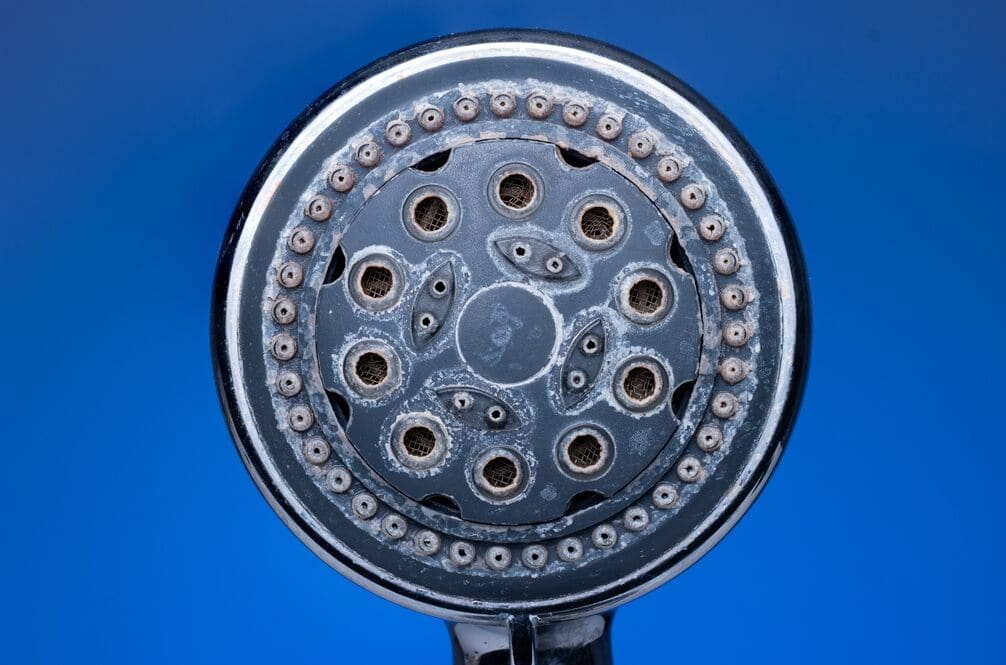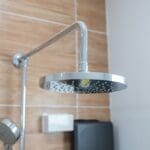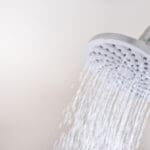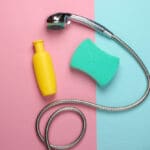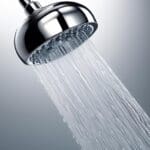Like a silent thief in the night, the white stuff stealthily clogging your shower head is robbing you of a fully satisfying shower experience. You’re facing a common adversary found in many households: limescale.
This unwelcome guest is primarily composed of calcium and magnesium, minerals that are naturally present in your tap water. Depending on where you live, you might be dealing with hard water, which means your water has a high mineral content. While it’s not a health hazard, this mineral buildup can lead to aesthetic issues and plumbing headaches if left unchecked.
You might be wondering how to tackle this problem effectively without resorting to harsh chemicals or expensive interventions. Stick around, as we’re about to uncover some practical insights and solutions that will not only help you remove the existing buildup but also prevent future occurrences, ensuring your shower head remains as pristine as it was on day one.
Key Takeaways
- Hard water contains high levels of calcium and magnesium, leading to limescale buildup.
- Limescale can clog shower nozzles and reduce water flow.
- Hard water doesn’t pose health risks but can affect appliance efficiency and lifespan.
- Using heavily distilled white vinegar as a descaling agent and installing a water softener can help prevent clogs.
Understanding Hard Water
Hard water, characterized by its high mineral content of calcium and magnesium, often leads to buildup on plumbing systems and appliances. This isn’t just an inconvenience; it’s a problem that can significantly affect the efficiency and longevity of your home’s water-related equipment. The main culprits behind these issues are mineral deposits, primarily composed of calcium carbonate, which accumulate over time. These deposits restrict water flow and reduce the effectiveness of soap and detergents by limiting their ability to lather.
You’re likely dealing with hard water if you notice a white, chalky residue around your faucets or on dishes after washing. This is a telltale sign of calcium carbonate deposits. Beyond just a nuisance, these mineral deposits can cause failures in your appliances, plumbing materials, and equipment, leading to potentially costly repairs.
Fortunately, the negative effects of hard water can be reversed. Water softening systems, conditioners, and descalers are effective solutions. They work by removing or altering the calcium and magnesium ions that cause hardness. As a result, softened water not only protects your appliances and plumbing but also improves the performance of skin, hair, nails, and soap, making it a worthwhile investment for your home.
Identifying Limescale Buildup
Limescale is a chalky, white buildup is primarily composed of calcium and magnesium. It’s a telltale sign that your water supply is hard, meaning it’s high in mineral content. You’ll often find limescale clinging to surfaces that frequently come into contact with hot water, such as your shower head, faucets, and kettles.
Identifying limescale buildup is straightforward. Look for a white, crusty layer covering the metal parts of your plumbing fixtures. In your shower, it’s the white stuff clogging the nozzles, reducing water flow and pressure. Over time, this buildup can become more pronounced, extending to tiles and shower doors, leaving a cloudy residue that’s hard to clean.
Don’t ignore these signs. Limescale buildup isn’t just unsightly; it can lead to increased wear and tear on your appliances, potentially shortening their lifespan. Recognizing the early signs of limescale is the first step in taking action to mitigate its effects, ensuring your home’s water system runs smoothly and efficiently.
Health and Home Impact
While water hardness itself may not pose direct health risks, it’s crucial to understand how it impacts both your wellbeing and your home’s maintenance. The white residue, known as limescale or calcium buildup, results from minerals like calcium and magnesium in your tap water. Over time, this mineral buildup can lead to scale in your pipes, significantly affecting the efficiency and lifespan of appliances like washing machines and water heaters.
Though generally harmless to health, high mineral content in water can cause aesthetic issues. You might notice a different taste or see staining on clothes and dishes, which, while not harmful, can be bothersome. To combat these effects, regular cleaning with vinegar or baking soda helps remove limescale.
However, for a more long-term solution, consider installing a water softening system. Both salt-based and non-salt-based softeners, as well as reverse osmosis treatment systems, can significantly reduce water hardness, mitigating mineral buildup.
Effective Removal Techniques
Understanding the impact of water hardness, it’s now crucial to explore how you can effectively remove the mineral buildup from your shower head. The most straightforward and eco-friendly method involves heavily distilled white vinegar, known for its excellent descaling properties.
Here’s a step-by-step guide:
- First, remove the shower head. This might require a wrench, but often, it can be done by hand.
- Next, fill a bowl or a plastic bag large enough to submerge the shower head with distilled white vinegar. Ensure the entire affected area is covered.
- Let the shower head soak in the vinegar for at least an hour, but for severe scale buildup, leaving it overnight yields better results.
- After soaking, remove the shower head from the vinegar. Use an old toothbrush to scrub off any lingering scale buildup. Pay special attention to the nozzles, where minerals tend to accumulate the most.
- Rinse the shower head thoroughly with water before reattaching it.
Regular maintenance using this method can prevent future clogs and ensure a consistent water flow. Remember, the key to combating scale buildup lies in routine care and the powerful cleaning action of distilled white vinegar.
Warning: Always test out the solution on a hidden area of your shower head first. Some shower heads finishes doesn’t play well with certain chemicals. So test it out first before soaking or cleaning your shower head.
Preventing Future Clogs
To prevent future clogs in your shower head, consider installing a water softener or conditioner to minimize mineral buildup. This device integrates into your plumbing system, altering the composition of the water before it reaches your faucets. By doing so, it significantly reduces the likelihood of deposits clinging to your shower head and pipes.
Regular maintenance is also crucial. Make it a habit to regularly clean and maintain your shower head and faucets. A simple yet effective method involves using a mixture of vinegar and water. Soak the shower head in this solution to dissolve and remove any mineral deposits effectively.
Additionally, incorporating a sediment filter or a whole-house filtration system into your plumbing can further safeguard against clogs. These treatment systems are designed to capture sediment and other particulate matter before they can accumulate in your plumbing fixtures.
Monitoring your water quality and hardness levels is another proactive step. By understanding the characteristics of your water, you can determine if your current treatment system is sufficient or if additional solutions are necessary to keep your plumbing system running smoothly and free of clogs.
Frequently Asked Questions
What Is the White Stuff Clogging My Shower Head?
The white stuff clogging your shower head is mineral deposits, like limescale or calcium, from hard water. It affects water flow and can make your skin and hair dry. Regular cleaning helps remove it.
How Do I Get Rid of White Buildup on My Shower Head?
To remove white buildup on your shower head, soak it in heavily distilled white vinegar or a cleaning solution, then scrub with a toothbrush. Rinse thoroughly. Prevent future clogs by regularly cleaning and consider a water filtration system.
What Is the White Gunk in My Shower?
The white gunk in your shower is mineral deposits from hard water, mainly calcium and magnesium. It can clog your shower head, reduce water flow, and damage fixtures. Soaking in heavily distilled white vinegar helps remove it.
How Do I Prevent Calcium Buildup in My Shower Head?
To prevent calcium buildup in your shower head, regularly clean it by soaking in heavily distilled white vinegar for at least 30 minutes. Then, scrub with a toothbrush and rinse thoroughly. Consider a water softener for long-term prevention.

